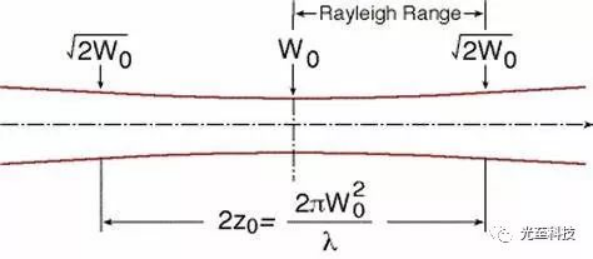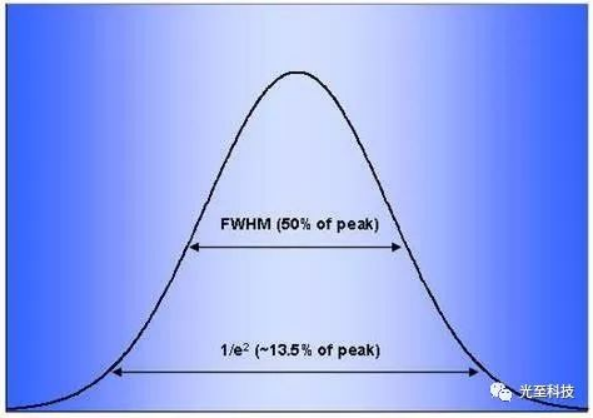Welcome:GZTECH
Welcome:GZTECH
In the world of fiber lasers, understanding the fundamental physical concepts is crucial. This article will delve into these concepts, starting with spatial and temporal domain physical quantities. We will cover essential terms like fiber diameter, collimated beam diameter, focal spot diameter, depth of focus, laser power density, pulse width, pulse repetition rate, repetition rate threshold, average power, pulse peak power, and single-pulse energy.
The diameter of the circular core in an optical fiber, typically ranging from 6μm to 50μm. It also includes the outer diameter of the circular, hexagonal, or octagonal cladding, typically ranging from 125μm to 400μm. Additionally, it encompasses the diameter of any circular organic material coating on the fiber, typically ranging from 280μm to 550μm.
In the context of fiber laser systems designed for long-distance transmission, the collimated beam diameter refers to the diameter of the laser beam after it passes through a lens. For near-single-mode Gaussian beams, this diameter is generally defined as the diameter containing 86% of the total power. For super-Gaussian beams, it's typically expressed as the half-width diameter. The typical collimated beam diameter for fiber lasers falls within the range of 5mm to 9mm.
When focusing a laser beam, the focal spot diameter is the finest diameter at the beam's waist. Depending on the specific processing requirements, typical focal spot diameters for fiber lasers range from tens to hundreds of micrometers. For applications involving high-energy lasers, the focal spot diameter can reach 1mm to 2mm.
The depth of focus refers to the range of beam propagation within which the laser power density remains relatively constant. In general, the beam's transmission characteristics are symmetric about the focal point, resulting in approximately equal depths of focus on both sides. For Gaussian beams, the depth of focus is typically defined using the Rayleigh length (ZR), which represents the distance over which the beam area expands to twice its initial value. The formula for ZR is ZR = π*w0^2/λ, where w0 is the radius of the beam at the focus, and λ is the laser wavelength. During material processing, variations in laser power density within a range of up to two times the nominal value can be accommodated within the depth of focus. When the material's surface irregularities fall within the depth of focus range, their impact on processing outcomes is relatively minor.

Laser power density is defined as the laser power (peak) divided by the area of the laser spot formed on the material surface. It is typically expressed in units of W/cm^2 or MW/cm^2. In laser-material interactions, the laser power density plays a crucial role, and its magnitude is directly associated with the effectiveness of various laser processing techniques. For instance, laser power density for processes like laser conduction welding typically ranges from 1E5 to 1E6 W/cm^2, while laser deep-melt welding may require power densities in the range of 1E6 to 1E7 W/cm^2.
Pulse width refers to the duration of a single pulse and is commonly characterized using parameters such as full width at half magnitude (FWHM), 1/e² width, and base width. FWHM represents the width within which the pulse power is at half of its peak power, while 1/e² width corresponds to the width where the pulse power drops to 1/e² (approximately 13.5%) of its peak. Base width denotes the width within which the pulse power is at 10% of its peak. For Gaussian pulse lasers, the pulse width is typically defined using the 1/e² width, while for square wave pulse lasers, it is often based on the base width. The unit conversions for pulse width are as follows:
1s = 1E3 ms = 1E6 μs = 1E9 ns = 1E12 ps = 1E15 fs

Pulse repetition rate, measured in hertz (Hz), indicates how many pulses occur within one second (1s). The reciprocal of the repetition rate is the pulse period. Typical repetition rates for Q-switched nanosecond pulse lasers range from 20kHz to 100kHz, for MOPA nanosecond pulse lasers, they fall between 1kHz and 4MHz, and for mode-locked pulse lasers, they range from 10MHz to 80MHz. The unit conversions for repetition rate are as follows:
1 THz = 1E3 GHz = 1E6 MHz = 1E9 kHz = 1E12 Hz
In MOPA nanosecond pulse lasers where both pulse width and repetition rate are adjustable over a wide range, there exists a specific pulse width at which the laser can output its maximum average power corresponding to a pulse repetition rate.
Average power is the amount of laser energy emitted within one second (1s). For instance, an average power of 200W means that 200 joules of laser energy are emitted in 1s. In continuous-wave lasers, the average power is equal to the transient peak power, while for pulsed lasers, it is determined by multiplying the single-pulse energy by the pulse repetition rate. Due to the typically low electro-optical efficiency of fiber lasers, usually ranging between 20% to 30%, laser systems operating at a certain average power level generate 2 to 3 times that power in the form of heat, necessitating effective cooling methods. For fiber lasers with lower average powers (less than 300W), air cooling is suitable, whereas water cooling is more secure and reliable for higher average powers. Solid-state lasers, on the other hand, have significantly lower electro-optical efficiency, resulting in heat powers that are orders of magnitude higher than their laser outputs. Additionally, their ability to dissipate heat from bulk gain media is inferior to that of slender fiber structures. This, combined with susceptibility to thermal effects in the gain medium, necessitates water cooling for watt-level laser outputs.
Pulse peak power corresponds to the transient power at the highest point of the pulse power envelope. Typical peak powers for quasi-continuous wave lasers are in the kilowatt range, while nanosecond pulse fiber lasers exhibit peak powers around 10kW. Ultrashort pulse fiber lasers, after pulse width compression, can achieve peak powers in the megawatt (MW) to gigawatt (GW) range. The maximum achievable pulse peak power in laser systems is primarily limited by nonlinear effects during laser propagation through the medium. Fiber lasers, with core mode field diameters on the order of tens of micrometers, exhibit peak powers typically lower by 1 to 3 orders of magnitude compared to bulk solid-state lasers.
Single Pulse Energy = Average Power / Pulse Repetition Rate
Pulse Peak Power = Single Pulse Energy / Pulse Width (FWHM)
Peak Power Density = Pulse Peak Power / Beam Area
Understanding these foundational physical concepts is essential for harnessing the incredible capabilities of fiber lasers. Stay tuned for the next articles in our series, where we will explore more concepts related to fiber laser technology. At GZTECH, we are your trusted source for cutting-edge laser innovations.
By continuing to use the site you agree to our privacy policy Terms and Conditions.